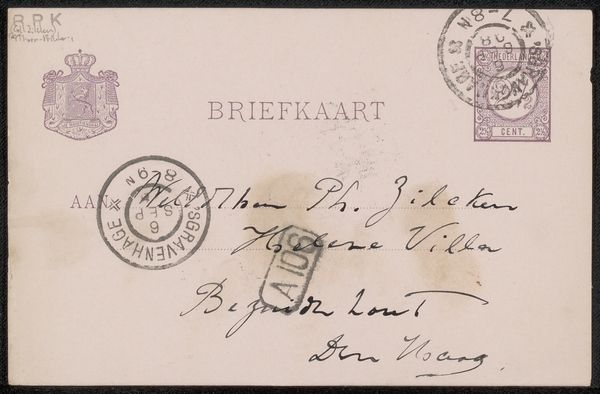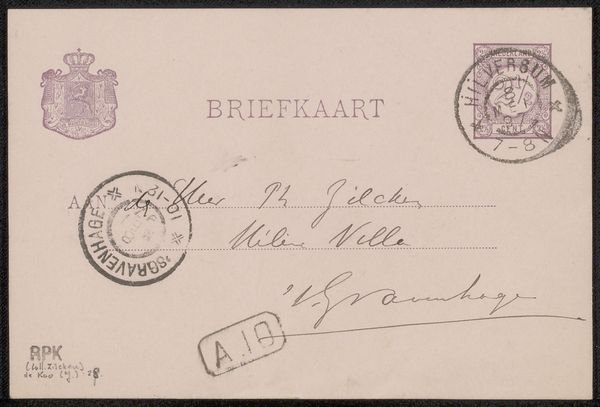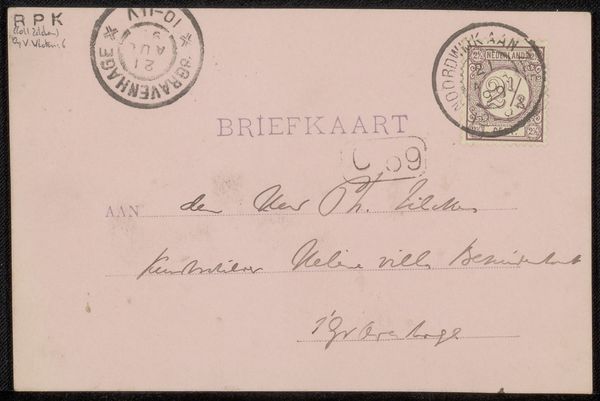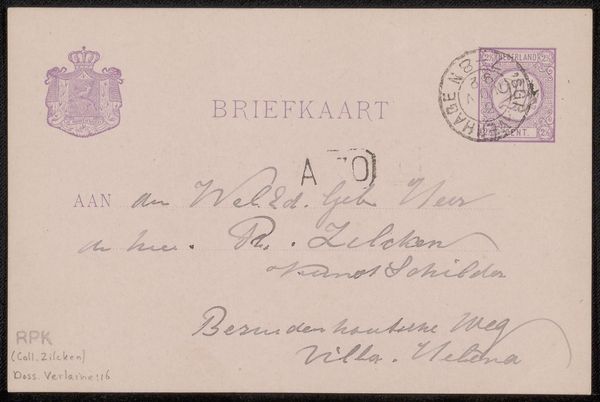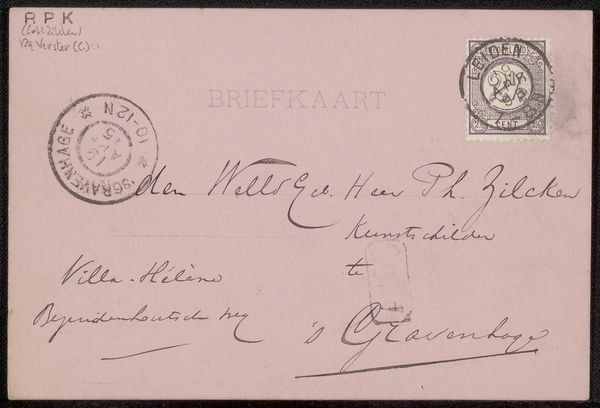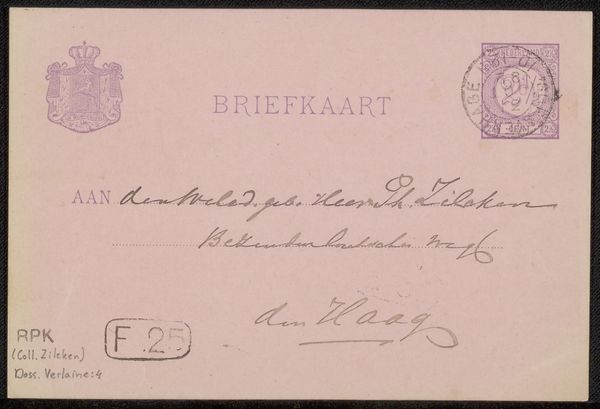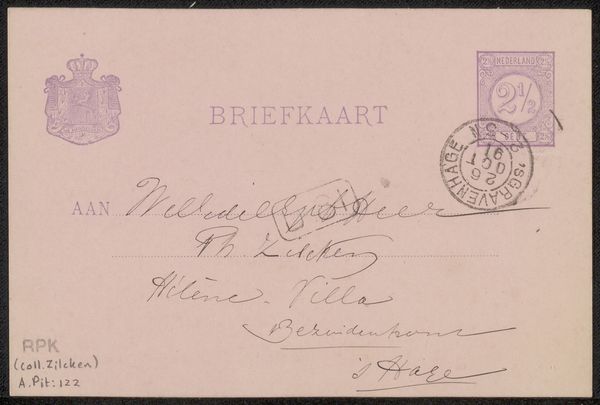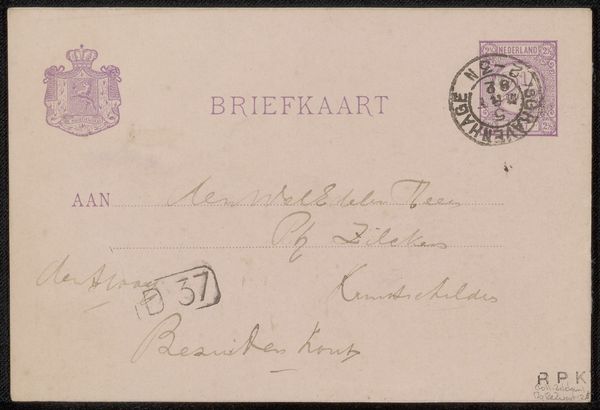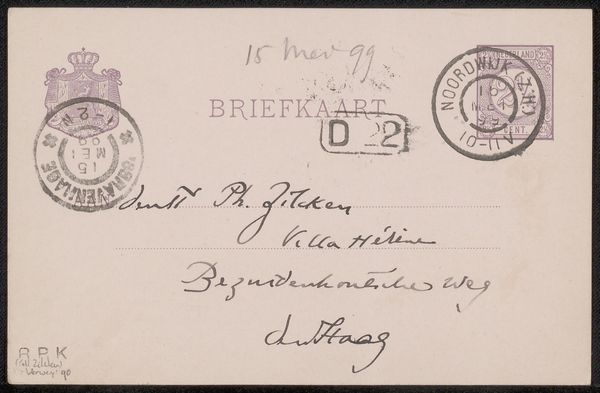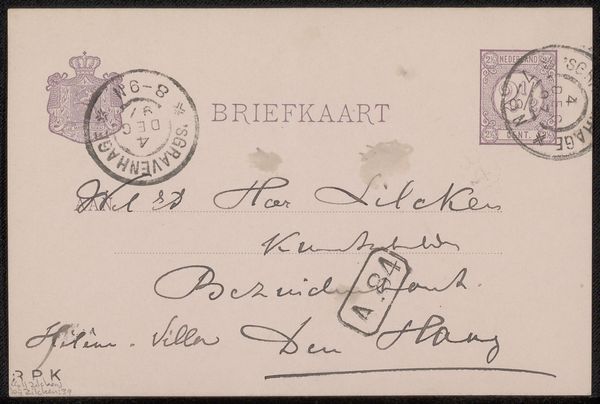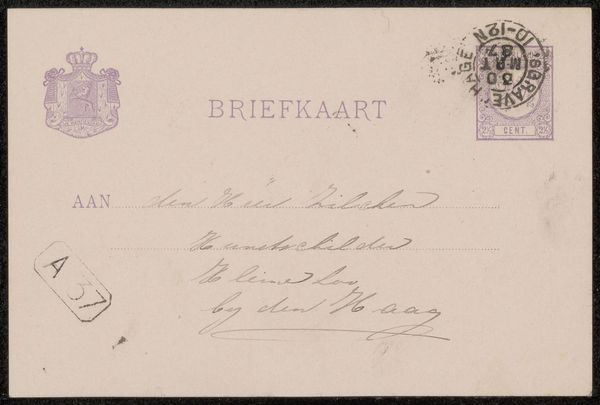
print, paper, ink
#
pen drawing
# print
#
pen illustration
#
pen sketch
#
old engraving style
#
hand drawn type
#
paper
#
personal sketchbook
#
ink
#
ink drawing experimentation
#
pen-ink sketch
#
pen work
#
sketchbook drawing
#
calligraphy
Copyright: Rijks Museum: Open Domain
Curator: This unassuming object before us is titled "Briefkaart aan Philip Zilcken," believed to have been created around 1896. The artist, Henriëtte de Vries, used ink on paper to produce this intriguing piece. Editor: It's deceptively simple, isn’t it? Initially, the gray-scale monochromatic palette projects a rather austere mood. The layering of script, postal stamps, and seals creates a dense visual field. Curator: Indeed. As a piece of postal ephemera, it speaks to a particular historical moment, likely offering insights into the social networks and artistic exchanges of the time. Who was Philip Zilcken, and what relationship did de Vries have with him? How did postal services mediate interpersonal connections during that period? These are crucial questions when considering the artwork's cultural significance. Editor: Yet, strip away that context, and consider purely the composition. The calligraphy—that swirling, almost ornamental handwriting—creates its own aesthetic rhythm. The postal markings, viewed abstractly, offer interesting shapes and tonal variations. Consider the semiotics of each mark; the seal and their relationship with the letter body. Curator: I agree the formal aspects contribute meaningfully to its reception. The act of writing and sending correspondence can be loaded with significance—power dynamics, social rituals, gender roles, and so forth. Was this exchange of correspondence an act of subversion of social structures? Editor: The formal elements offer clues. The deliberate placement of each component, combined with the unique character of the handwritten text, suggests intentionality. The balance achieved amidst seeming chaos reveals structure and the hand of a conscious mind in action. Curator: Studying such artwork, even one as small as a postcard, broadens our appreciation for art beyond traditional boundaries and unveils new historical contexts. Editor: And it reveals the artistry embedded in even the most utilitarian of objects, showing us the latent visual potential in everything.
Comments
No comments
Be the first to comment and join the conversation on the ultimate creative platform.

